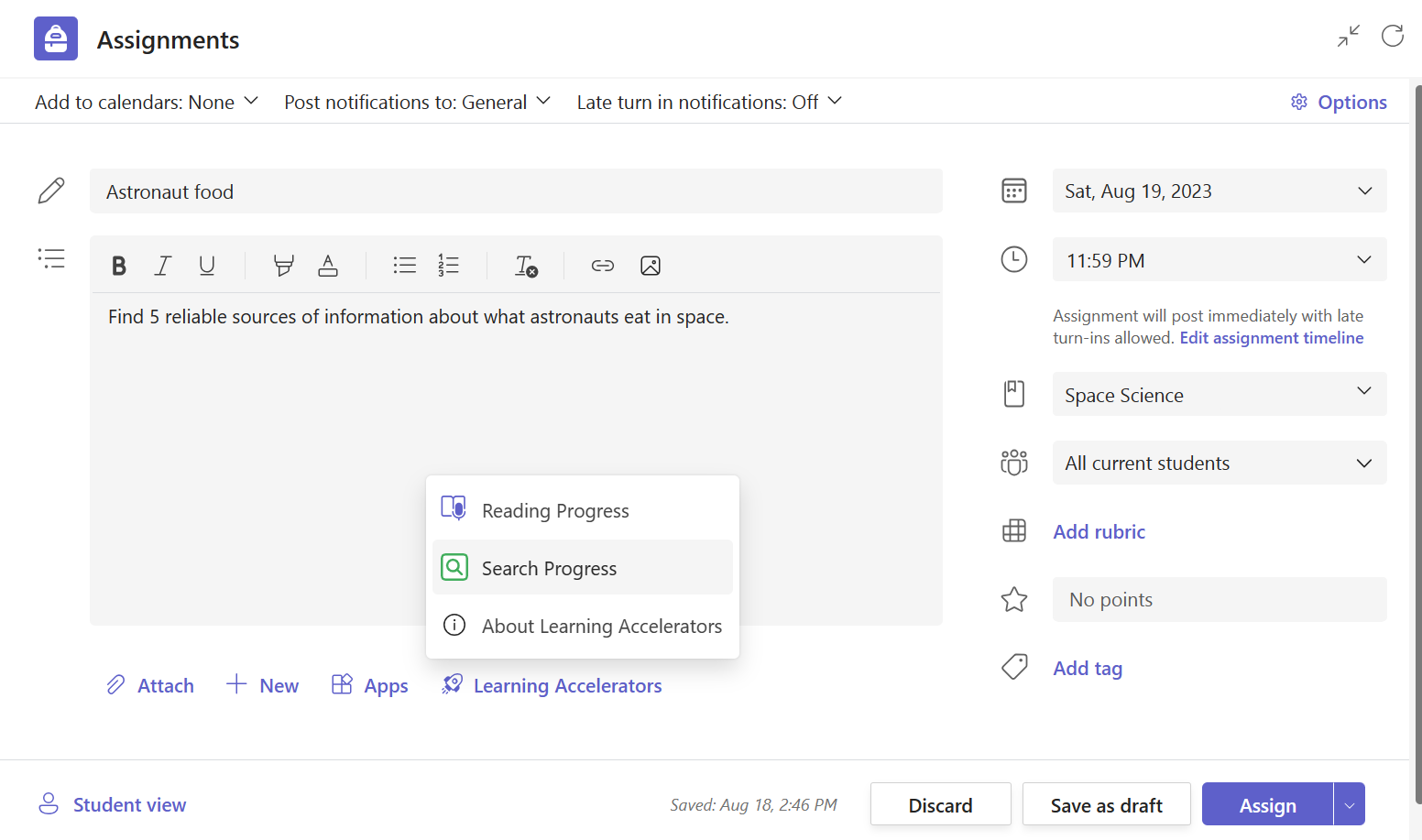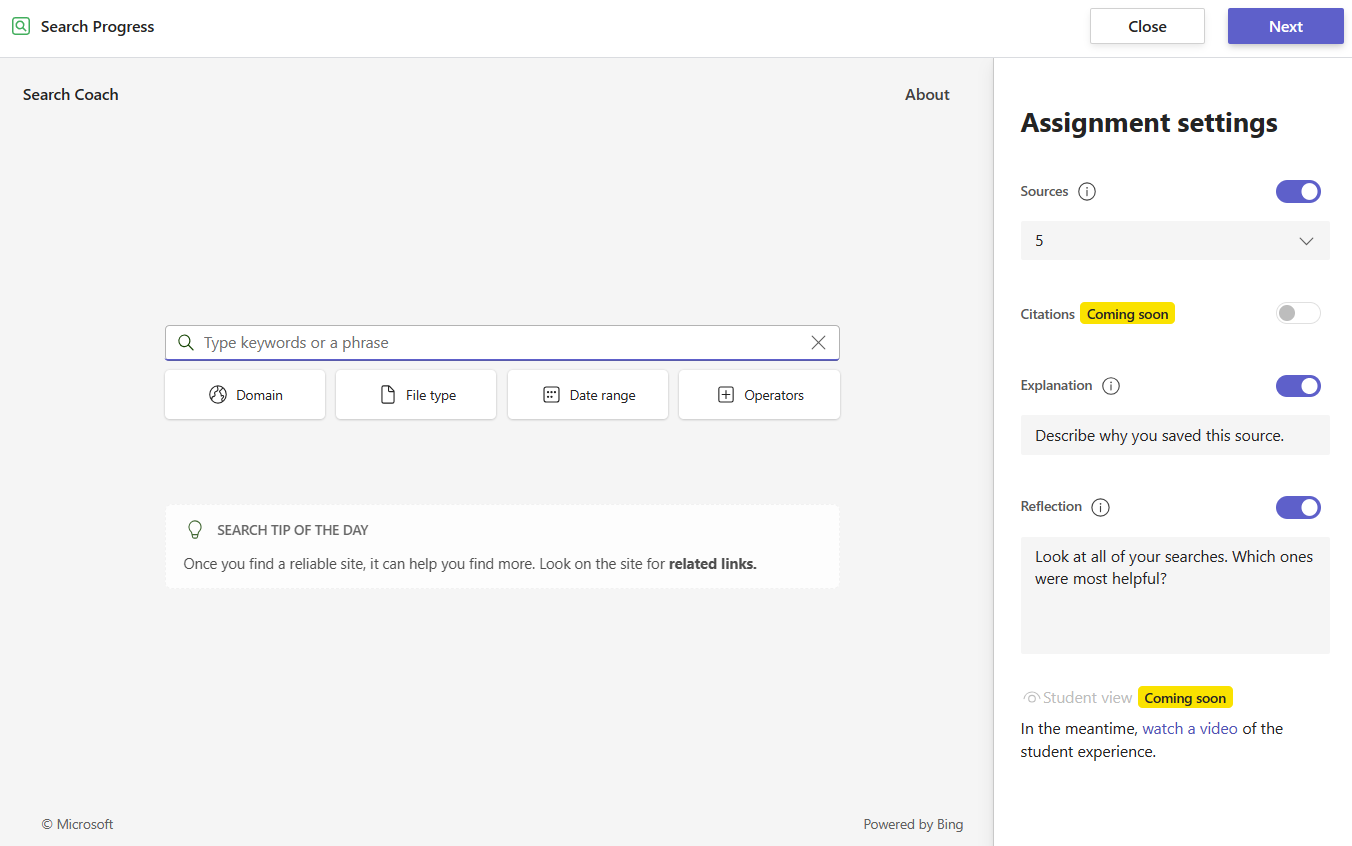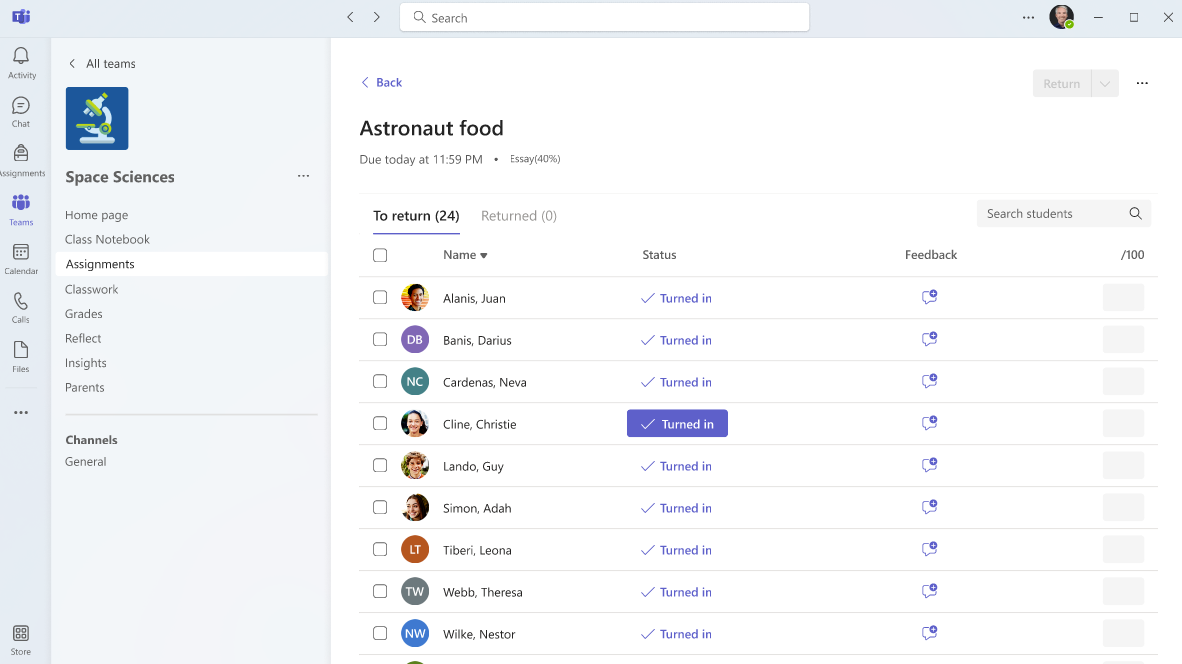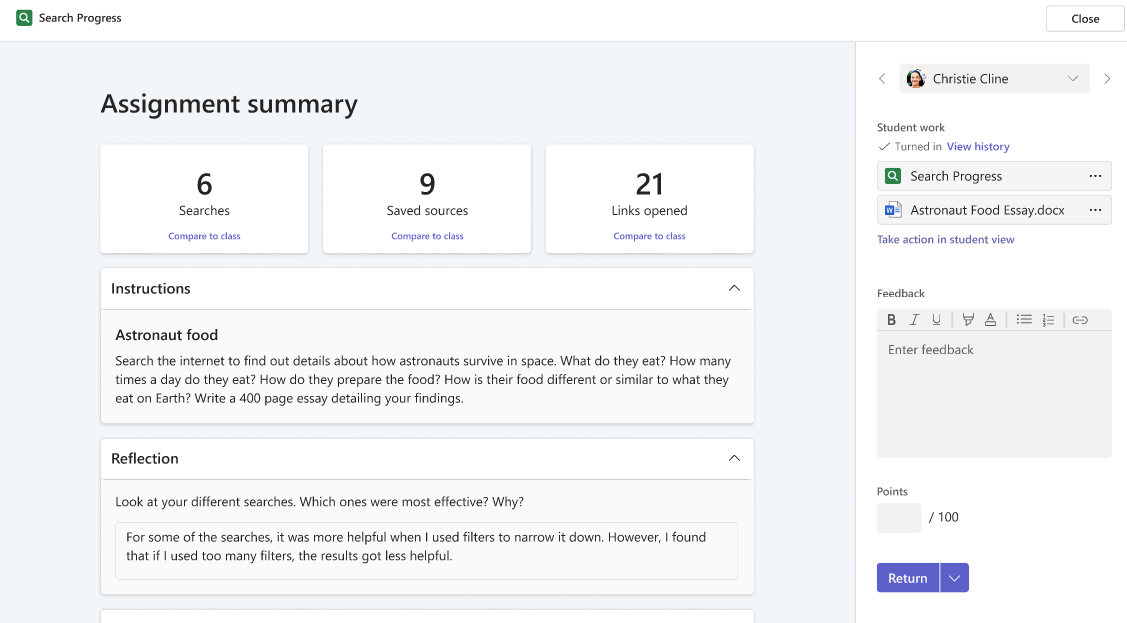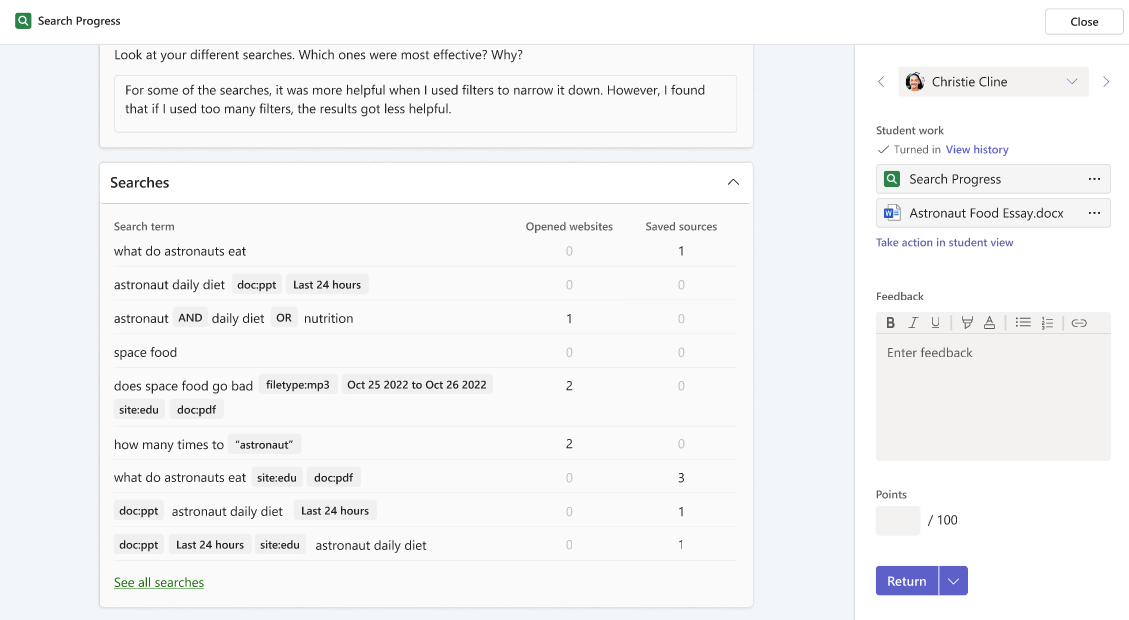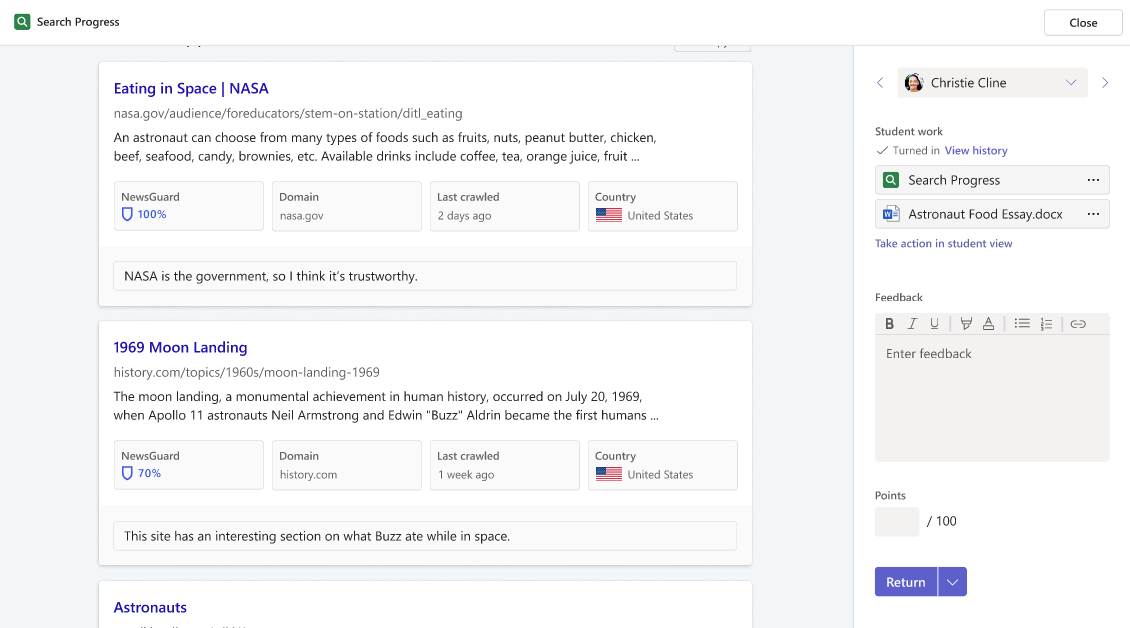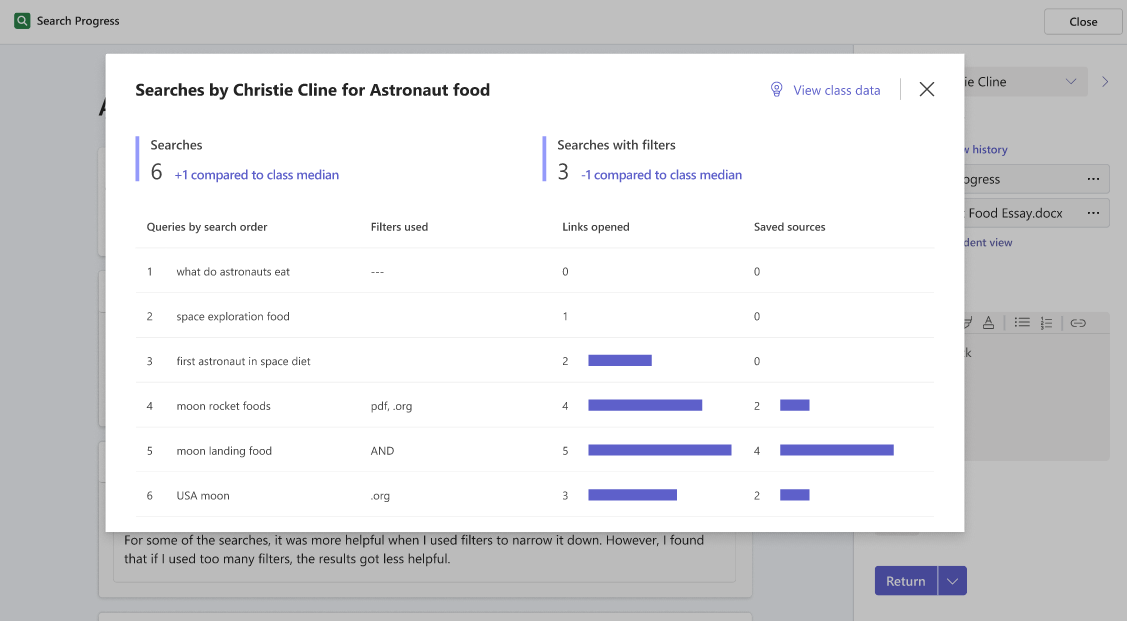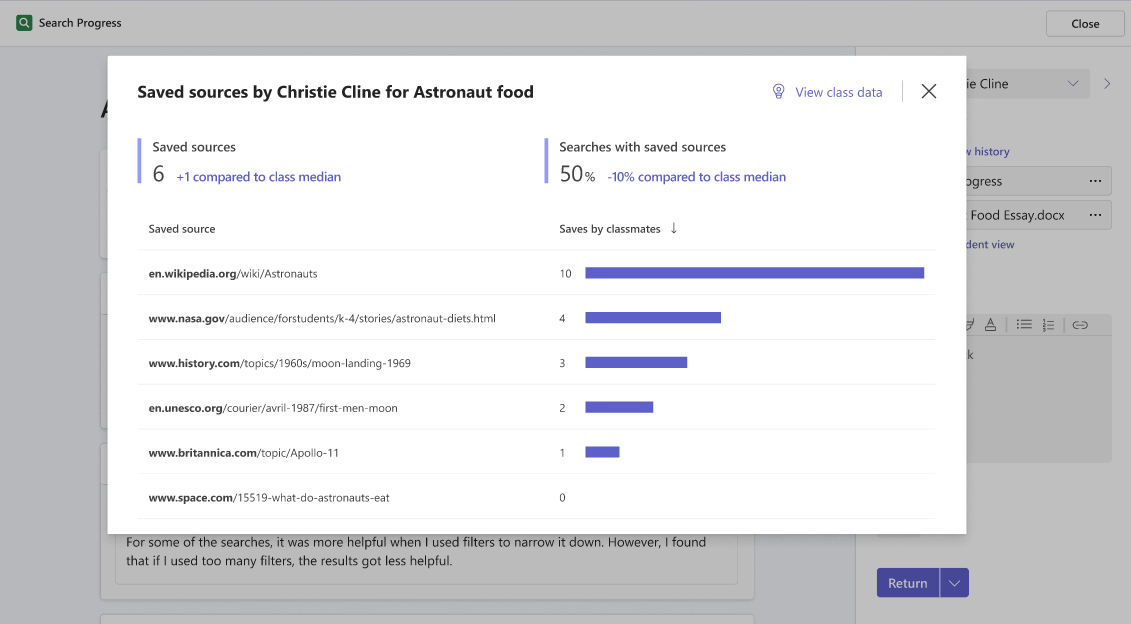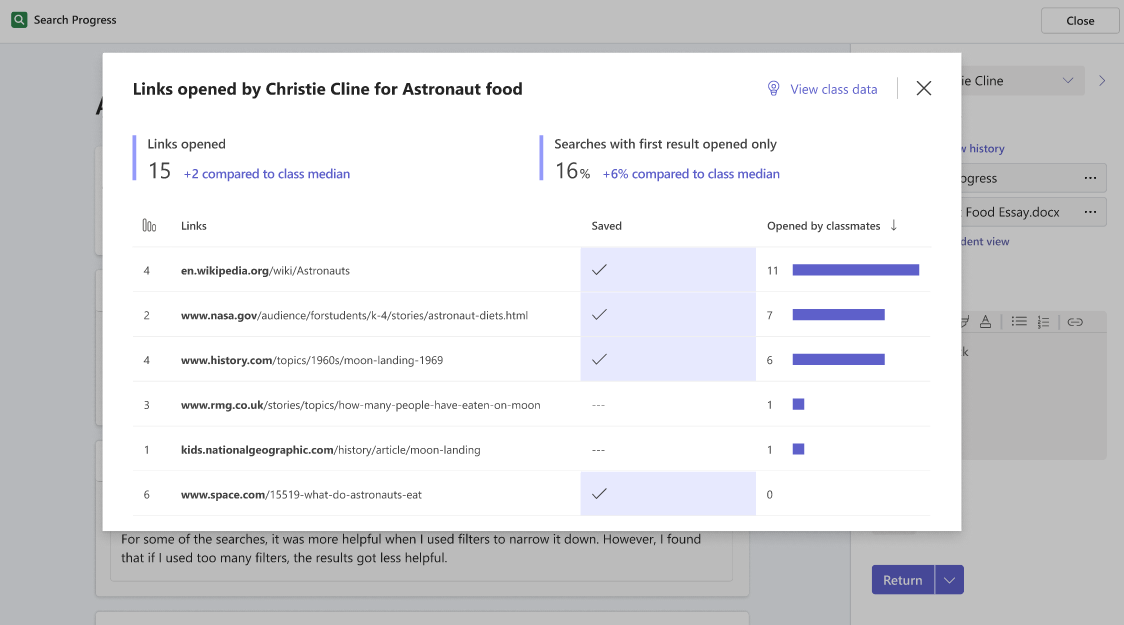Search Progress is designed to make it easier for educators build information literacy into any research assignment, no matter the subject at school.
With Search Progress:
-
Educators get visibility into how students search for and find information, like how "showing your work" lends transparency to a math problem.
-
Students learn how to discern the credibility of sources and search more effectively online, while built-in reflection opportunities help to foster critical thinking skills throughout.
Search Progress is powered by Search Coach, which you can read more about here.
Creating a Search Progress assignment
You can create your first Search Progress assignment in five simple steps:
-
In the Teams for Education class where you’d like to create the assignment, navigate to the Assignments tab, selectCreate, and then select New assignment.
-
Enter a title and instructions for your assignment. A title could be something like “Astronaut food”, with instructions like “Find 5 reliable sources of information about what astronauts eat in space.”
-
Select the Learning Accelerators button and then Search Progress. You’ll be taken to a page that helps you customize the assignment for your class.
-
Now it’s time to customize your assignment. Select how many sources you’d like your students to collect, and if you’d like, feel free to modify the Explanation and Reflection fields. Some suggestions for other possible Explanation and Reflection prompts can be found in our free online course.
-
Finally, select Next and you’ll be brought to your assignment page again. Select Assign, and you’re all done!
Tip: Try adding Search Progress alongside your next research paper or presentation. When you grade it, you’ll be able to easily toggle between their research in Search Progress and, their final deliverable!
Completing a Search Progress assignment
Students access Search Progress assignments just like any other Assignment in Teams for Education. Watch a full breakdown of the student experience in Search Progress here.
Search Progress activity is saved every step of the way, so that students can leave and return to their work at any time.
Reviewing a Search Progress assignment
Educators have access to two main review components of a "Turned In" Search Progress assignment.
The first is the Assignment summary page, where some top-level statistics are presented along with the student's overall reflections on their research process.
Scrolling down, it shows a list of searches completed by the student along with the filters used.
And at the bottom, you see the list of saved sources with explanations. Written, numerical and/or video feedback.
Next, there's Education Insights, which appear when you select Compare to class on any of the top-level statistic cards.
The Searches Insights pop-up compares the number of searches and the number of saved searches by the student to the class medians for each. It also shows the student's queries in the order they did them, and shows how their filter usage and links opened or saved change over the course of their research process.
Selecting View class data will show the class median for number of searches and number of searches with filters. This is especially useful to help educators reflect on the difficulty level of a given assignment and understand how they might adjust new assignments in the future. It also features word cloud of the most frequently used search terms for the class.
The Saved sources Insights pop-up compares the student's number of saved sources and searches with saved sources to the class medians for each. It also shows the student's saved sources in the order they saved them, and also how many of their classmates saved the same ones.
Selecting View class data will show the class median for number of saved sources and number of searches with saved sources, as well as a ranked list of the most commonly saved sources for the class.
Finally, the Links opened Insights pop-up compares the student's number of opened links and searches with only the first result opened to the class medians for each. It also shows a history of the links they opened, which ranking each link had on the search results page, and also how many of their classmates opened the same ones.
Selecting View class data will show the class median for number of opened links and searches with only the first result opened, as well as a ranked list of the most commonly opened links for the class.

